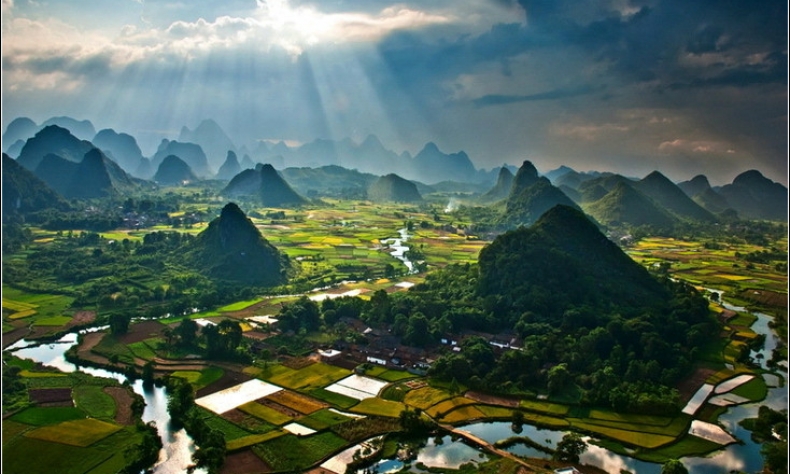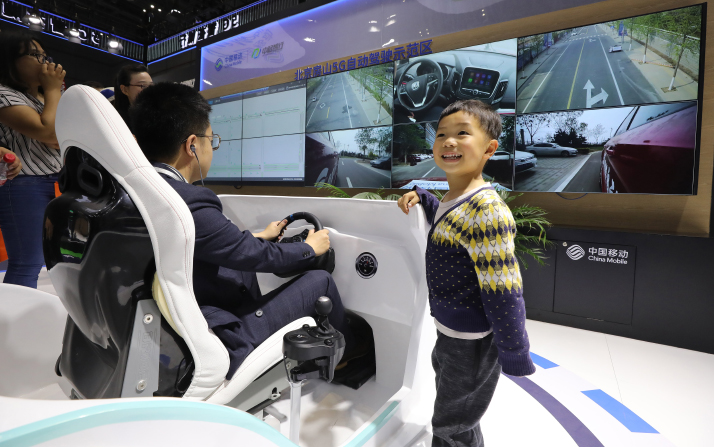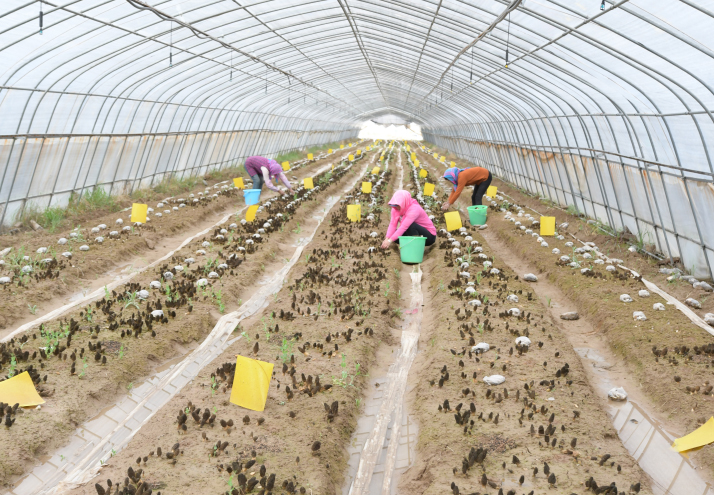
Why Is China Still a Developing Country?
When I recently referred to China as the world’s largest developing country to some of my European friends, they thought it was a humorous understatement since they have been to many Chinese cities and have the impression that some are on par with cities in developed countries in terms of convenience.
Over the past years, China’s economy has grown rapidly, making it the second largest in the world, after the United States, with high-tech companies such as Tencent, Huawei, and Alibaba also emerging. Many recent Western media reports on China-U.S. trade frictions describe China as a rapidly rising developed country which may challenge the status of the United States as a leading power in the world.

This year marks the 70th anniversary of the founding of the People’s Republic of China. The nation has indeed made great progress over the past decades. But it’s still a developing country, with a long way to go before it becomes a developed one.
First, the urban-rural disparity in China remains a prominent problem to be addressed. Currently, the urbanization rate of the country is about 58 percent, lower than that of developed countries which stand at about 80 percent. The income gap between urban and rural residents needs to be narrowed since the per-capita disposable income of the former is 2.7 times that of the latter. Meanwhile, the per-capita consumption expenditure of urban residents is 2.2 times that of rural residents. The gap between urban and rural infrastructure and public services is even more striking.
Building roads is a priority in China’s rural poverty alleviation program, as many localities in extreme poverty still don’t have access to highways. Although the country has made great progress in road construction, its road density is low, reaching only 0.51 km per square km in 2017. In contrast, the road density in Germany and Poland was 5.8 km and 2.7 km per square km, respectively, in the same year, while that of India was 1.8 km per square km.
Sanitary facilities in rural areas are still of poor quality. China launched the “toilet revolution” campaign in 2015, renovating and building more than 70,000 pollution-free toilets in over three years. However, only 36.2 percent of rural households have inside toilets, while those using outhouses account for 58.6 percent. Some 4.69 million rural households, or 2 percent of the total, have no toilets. Meanwhile, there is still much room for improvement in terms of drinking water quality, medical services, and communication facilities.
China’s eastern and western regions also have imbalanced development. In Beijing, Tianjin, and Shanghai, as well as in Jiangsu, Zhejiang and Fujian provinces, the per-capita GDP exceeds $13,000, equaling the minimum level of high-income countries. However, poverty alleviation efforts in some regions in west China are still focusing on meeting people’s basic needs. In addition, the country’s income distribution, ecological protection, and social security systems are not yet fully fledged.
Second, China’s per-capita income is still below the world’s average. Some Western media outlets have made inflated calculations of some data regarding China’s economy based on purchasing power parity and have concluded that the country’s gross national income is the highest in the world and its per-capita GDP is at the same level as high-income countries. However, the International Monetary Fund calculates the per-capita GDP by referring to a country’s purchasing power parity and categorizes countries into advanced, emerging and developing economies accordingly. Currently, China still falls into the category of developing economies.
Although the World Bank has classified China as an upper middle-income country according to its per-capita national income, the figure was $7,310 in 2017, representing only 15 percent of that of the United States and less than 25 percent of that of France. This figure was lower than the per-capita income of high-income countries, not even reaching the world’s average level of $10,387. China’s per-capita GDP was about $9,700 in 2018, which was still lower than the bottom line of $13,000 in high-income countries. In addition, per-capita GDP can’t be used as the sole criterion for categorizing developing and developed countries. The Human Development Index issued by the United Nations Development Program is also an important indicator of a country’s strength. In 2017, China’s Human Development Index ranked 86th in the world, putting it at a medium level, far below that of some European countries such as Germany and the UK.

Third, the development mode featuring extensive input and consumption of natural resources needs to be transformed and upgraded. The overall level of social productivity in China is still low and the production structure is inadequate and inappropriate. In the future, China needs to pay more attention to environmental protection while pursuing economic development as people have higher requirements for a better environment. The country also needs to improve the efficiency of investment, which stands at 1:7, significantly lower than that of developed countries.
Chinese people are one of the most hardworking in the world. The country’s average working time is 2,200 hours per year, much higher than developed countries in Europe and the United States. According to a survey of metropolises around the world, many Chinese cities are among those with the longest working hours. In some Internet companies in China, a “996” work schedule, which means working from 9 a.m. to 9 p.m., six days a week, has become common. Such a working mode, which is obviously unsustainable, has provoked criticism.
These issues reflect that the quality of China’s economic development and its technological innovation capability are still inadequate. Compared to developed countries, China enjoys large-scale manufacturing industries and high trade volume, but many domestic industries still land at the low end of the global industrial chain. It exports mainly low-value-added goods and has to import high-value-added products and advanced technologies. China’s cultural soft power, national defense strength, science and technology, and social governance capacity also need to be further enhanced.
China is pursuing high-quality development of the economy through supply-side structural reforms and industrial upgrading, which requires long-term efforts.
Fourth, China’s development is still not objectively perceived in the international community. The country is shifting its development mode from focusing on high-speed growth to high-quality development and making it a top priority to meet people’s needs for a better life. There are still 30 million poor people and more than 80 million people with disabilities in China. The number of seniors who need care has exceeded 200 million, while the number of people entering the job market per year stands at 15 million.
People’s livelihood remains to be improved through China’s development. However, some Western media outlets have publicized misleading reports on the country’s conditions by highlighting the “China threat” rhetoric when the country sees rapid growth and hyping the “China collapse” argument when it faces development challenges. To some extent, this actually proves that China is a developing country since developed countries still dominate the opinion formation process and agenda-setting around the globe.
The author is a research assistant with the Institute of World Economics and Politics, Chinese Academy of Social Sciences
 Facebook
Facebook
 Twitter
Twitter
 Linkedin
Linkedin
 Google +
Google +










